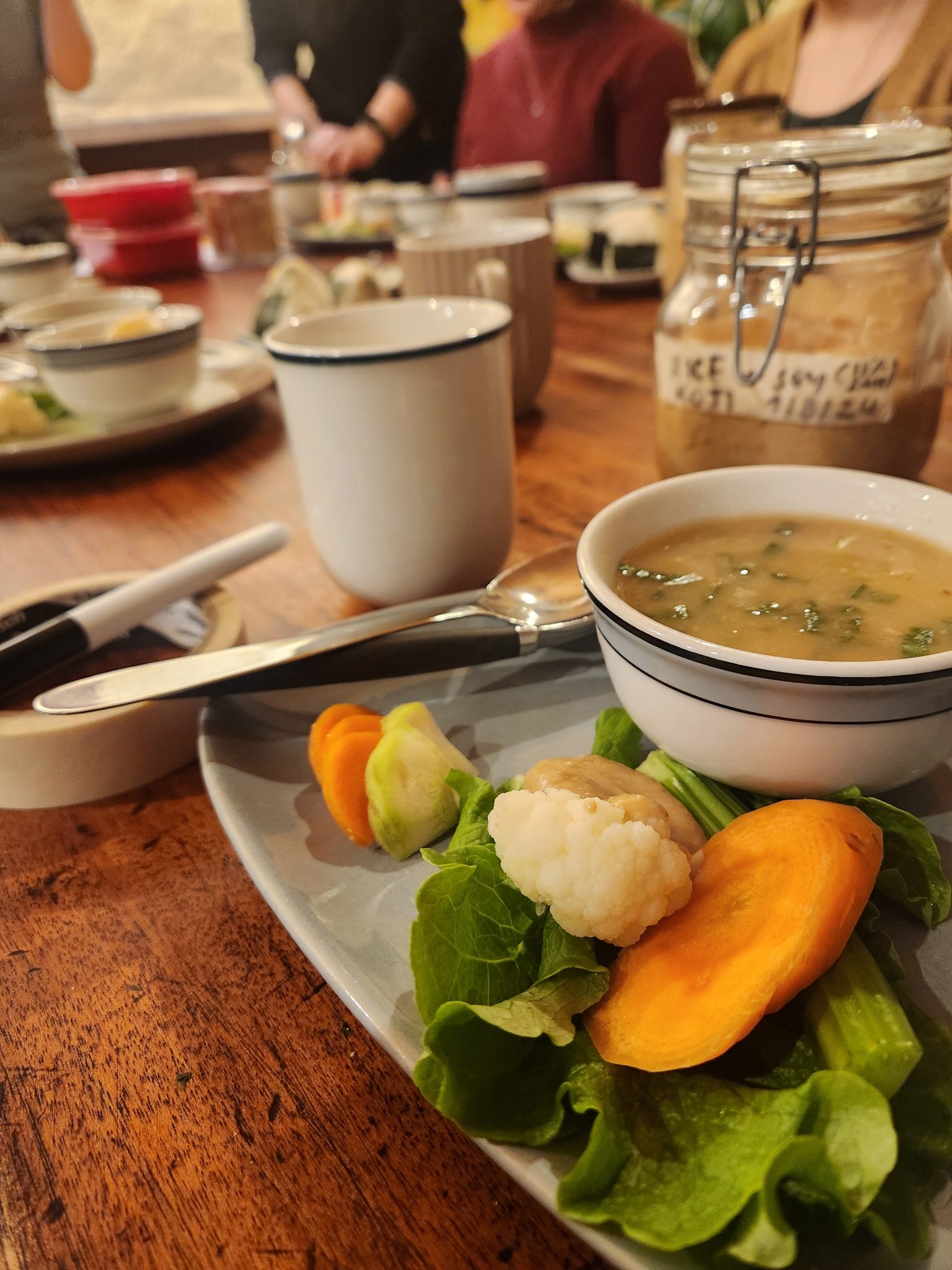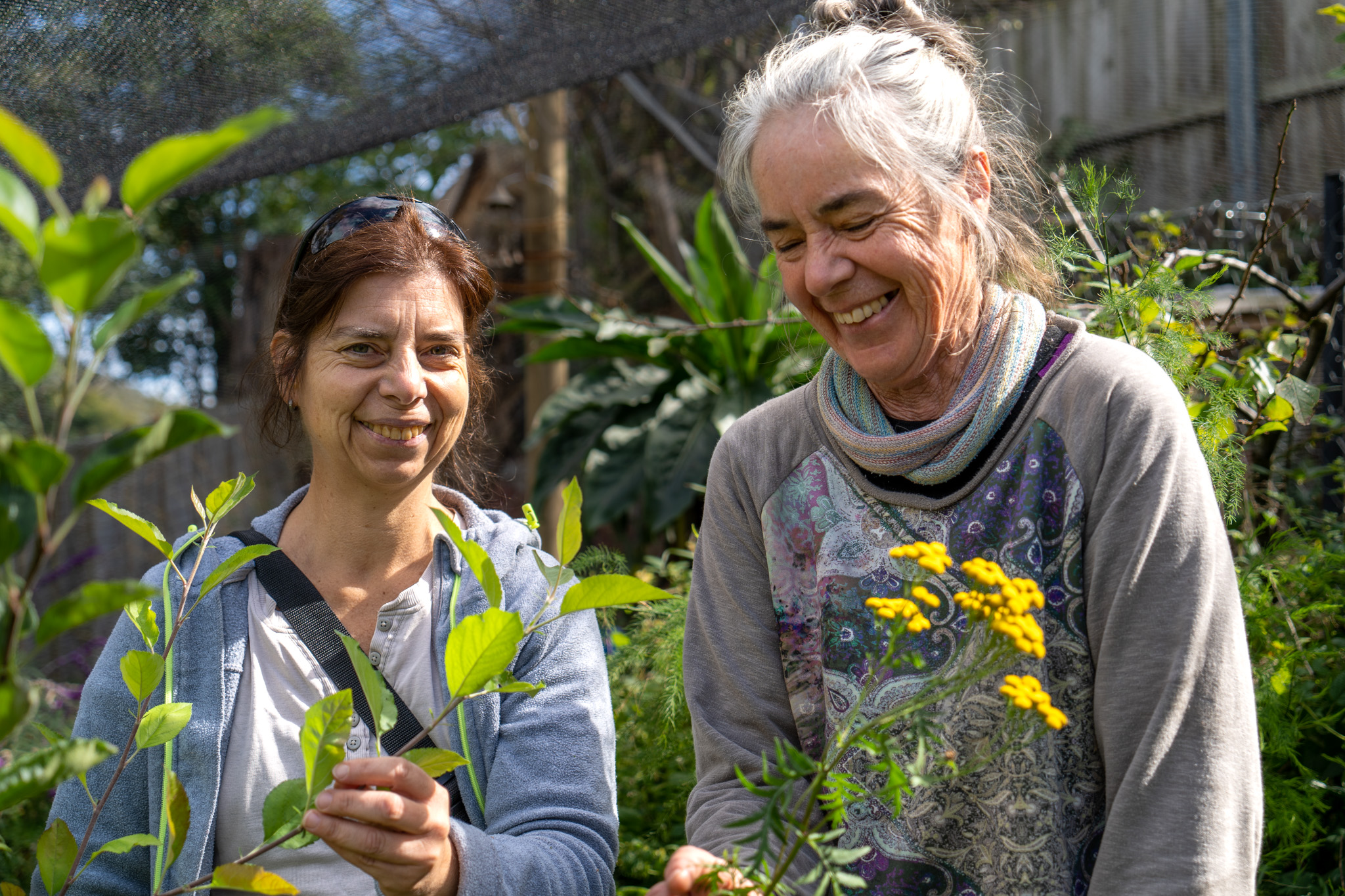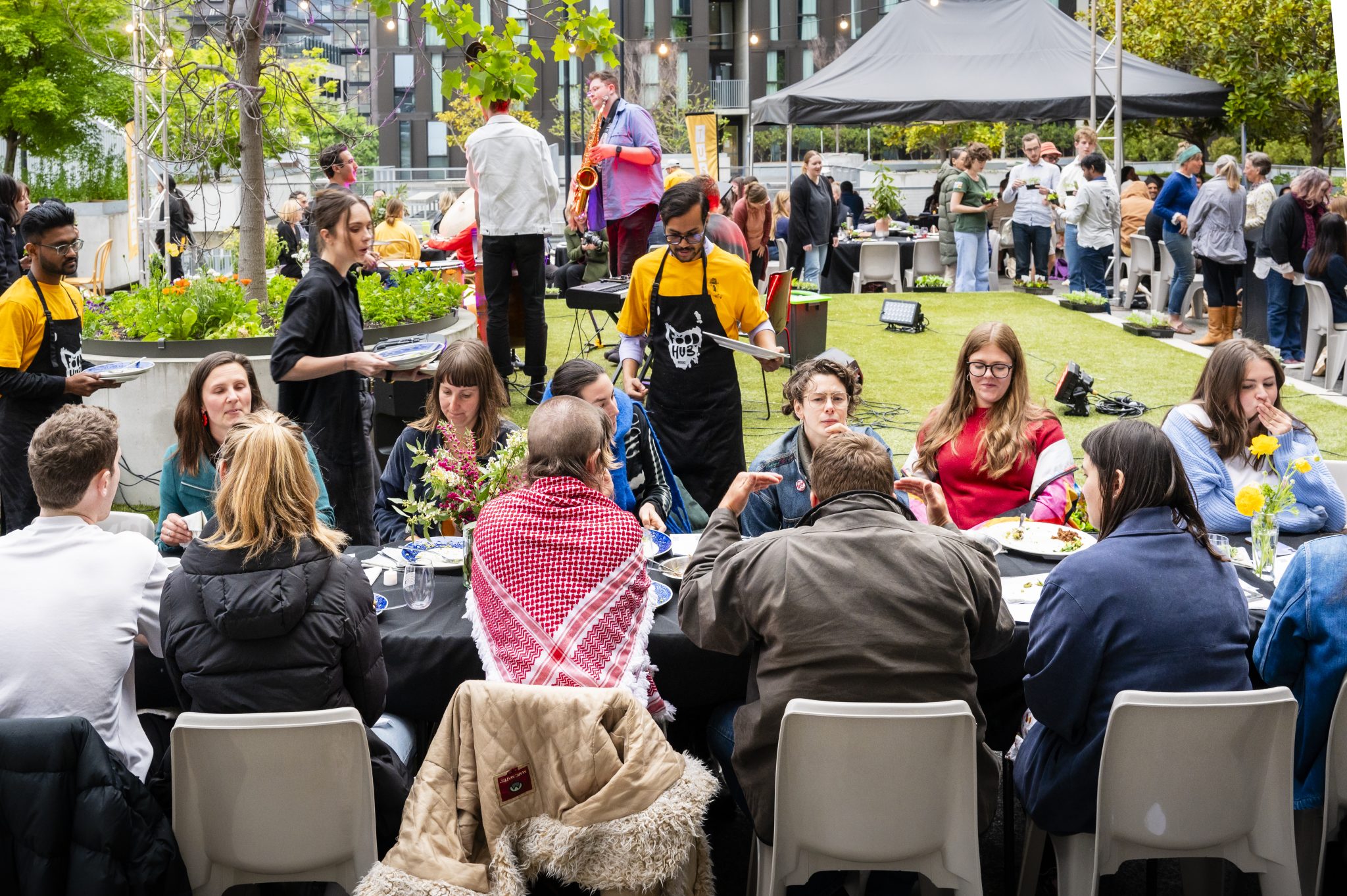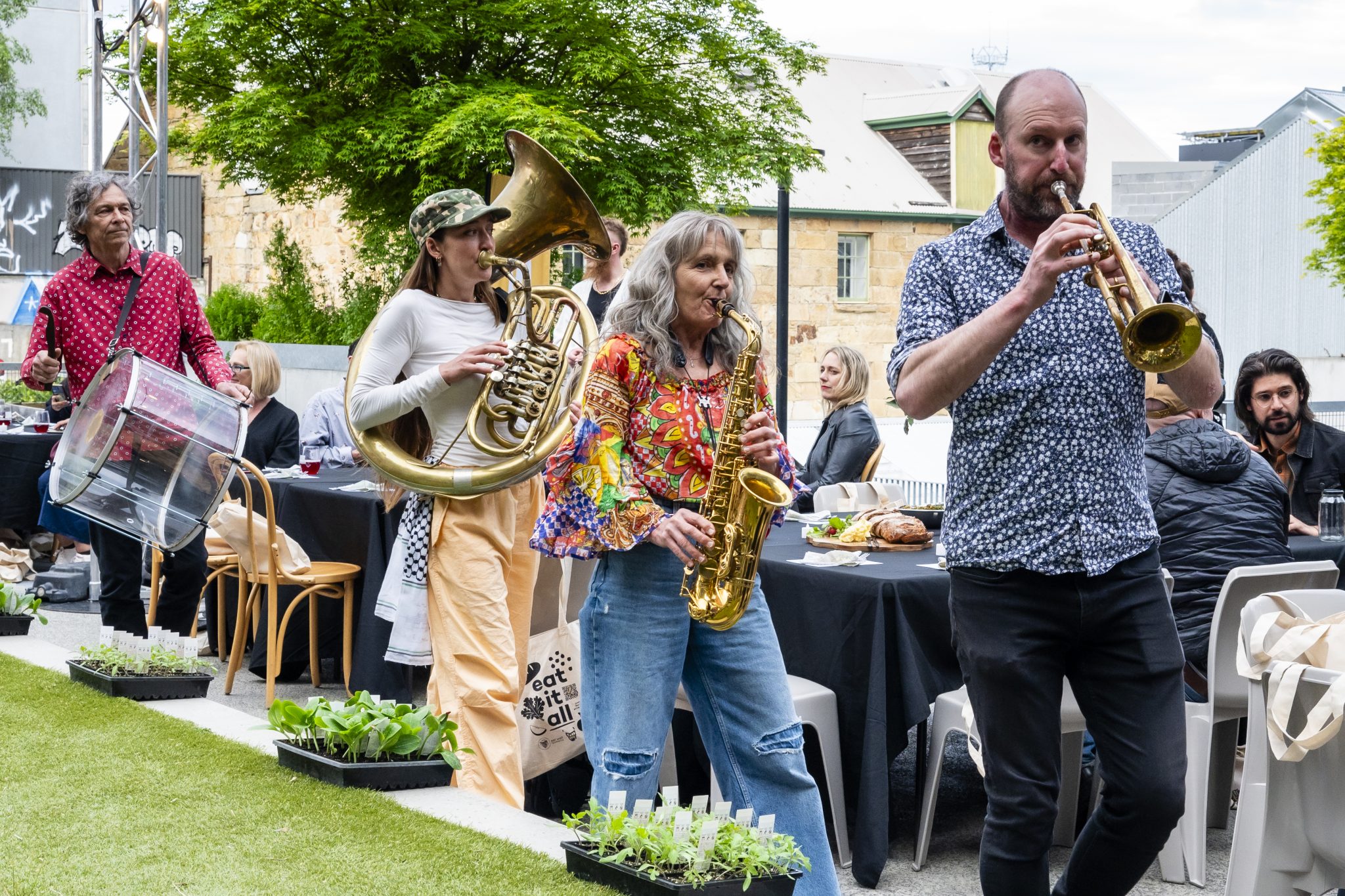A bunch of eager miso enthusiasts attended a miso workshop at Source Eco Hub. We shared tales of time spent in Japan, a desire to reduce food waste, and stories of eating delicious lunches by Tori’s Nest.
What is miso?
Miso is a staple in Japanese cuisine, and is made from three ingredients – usually soybeans, rice, and salt. Miso can flavour soup, make dressings, or be added to vegetables, meat or fish.
Miso is packed with umami goodness – one of the five basic tastes that’s tricky to describe. It’s not quite bitter, nor sour, salty, or sweet. Other foods high in umami are cheese, mushrooms, and seaweed. The flavour profile of miso even works well in desserts (as we came to taste!)
As part of our time together making miso – we also tasted a miso-inspired dinner together. On the menu was onigiri (rice ball) filled with celery leaves cooked with miso, succulent daikon radishes and carrots, paired with a miso and amazake sauce, a creamy miso and tahini dip, a miso soup, and for dessert – a miso and beetroot brownie.
It was wonderful to see the possibilities of miso, sharing, and connecting with each other through food.
Interested in adding miso into your cooking?
Try our Miso Mushroom Toasty recipe! The spinach adds a spring-time savoury twist.
Plus more good things this way.
You can find out more about Tori’s Nest, and Source Eco Hub weekly Japanese vegan lunches and workshops here.
Chie and Aki are from Tori’s Nest. They specialise in using local, seasonal produce, often collected from Source’s garden and fruit trees.
Follow our Seasonal Events guide through here for more cooking workshops, festivals, crop swaps and more.




